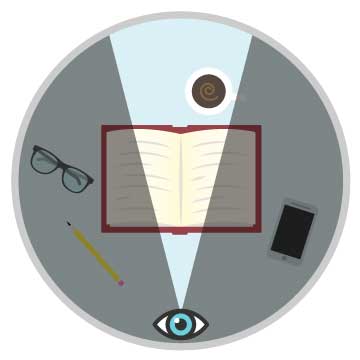
Caregivers commonly observe vision decline in dementia patients. People living with dementia commonly experience changes to their vision beyond what’s expected as part of the normal aging process. As dementia-related illnesses cause progressive brain deterioration, a person will experience certain sight deficits because the brain is no longer processing what the eyes see in the same way. Some common problem areas include:
The patient may exhibit difficulty in navigating steps, grabbing objects, and distinguishing between two- and three-dimensional scenes. With the latter, for instance, the person may try to pick up flowers from a floral-printed tablecloth.
In your youth, you likely enjoyed 180 degrees of clarity in front of you. As we age, we naturally experience a narrowing of our field of vision. For a person living with dementia, this process is on overdrive and it may cause them to not see a caregiver approaching from the side, or even a plate of food in front of them if they are not directly looking at it.

Dementia symptoms include confusion and memory loss. But that may not be all that’s in play when a patient seems to not recognize a loved one or frequent visitor. Damage to certain parts of the brain may cause misidentification of people, like thinking a man is one’s brother instead of husband. The problem similarly manifests itself in instances like seeing a red ball and calling it an apple.
Problems detecting contrast are commonly found in the bathroom, where the white toilet and seat disappear against a white tile floor. Mealtimes, already a challenge for some who struggle with swallowing, is problematic when, for example, white mashed potatoes aren’t noticed when served on a white dinner plate. Additionally, reduced ability to distinguish colors may result in a person picking out mismatched clothing.
You might also enjoy:
What is Sundowning?
Dementia Patients and Boredom
Assessing Agitation and Aggression
Dementia expert Teepa Snow explains vision decline in dementia patients: